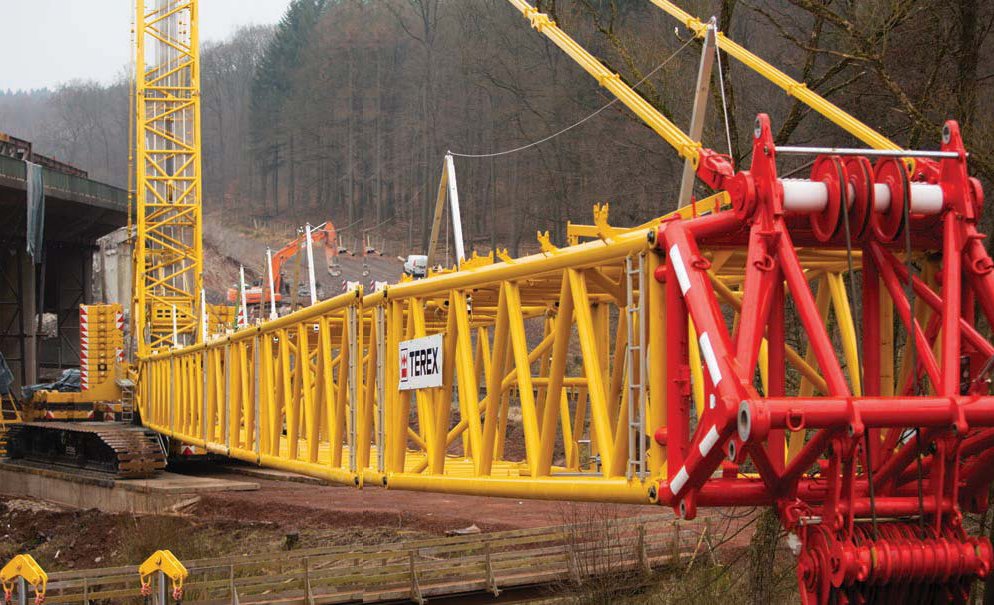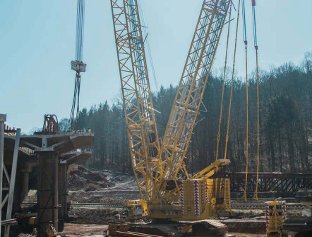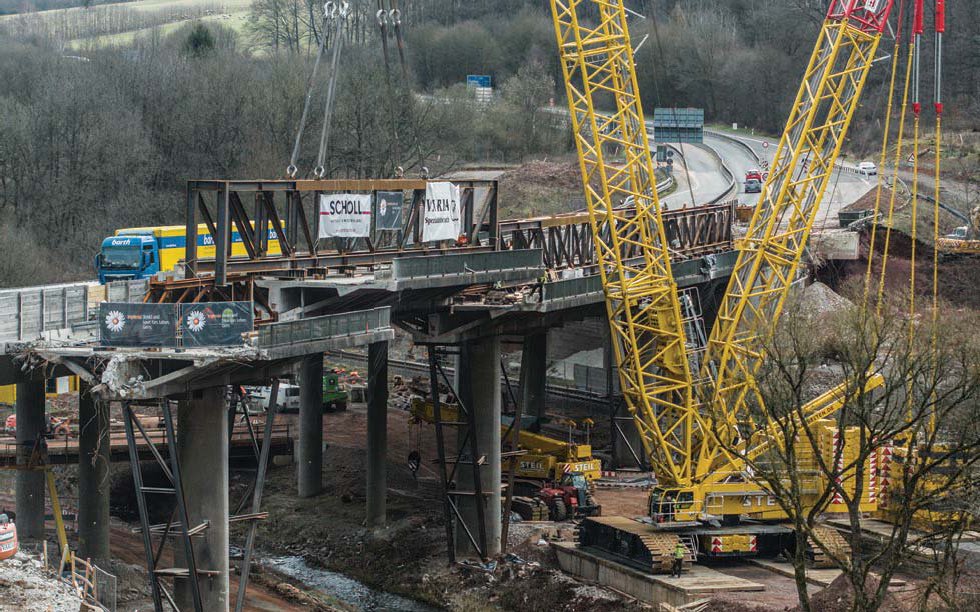Steil speeds with demag split tray
19 September 2018Terex’s Split Tray ballast system helped Steil set up quickly in limited space for a bridge job in Eppelborn
Steil Kranarbeiten, a crane operating company from Trier, used their CC 3800-1 crawler crane for a bridge demolition job in Eppelborn, Germany. The crane’s Split Tray, which allows extra ballast to be used, for example in boom raising, and then quickly removed in one go, eased work on a cramped site bounded by a railway and stream.
“The setup of the crane required sophisticated logistics, whereby we delivered the parts just-in-time with 52 transports in order to install them immediately,” said René Perlich, head of large cranes at Steil.
Concrete had to be poured in the bank area first in order for the unstable soil around the stream to be able to support the CC 3800-1 safely. Bongossi ties were then laid for even pressure distribution.
The CC 3800-1 was configured with 72m SSL1 boom and 11.5m Superlift radius, with 225t of main counterweight and 325t of Superlift counterweight.
The Steil team had to choose rather unconventional approaches even for the assembly of the Superlift mast and boom out of necessity. The Superlift system structure could not be installed in one piece on the crane as usual, since the required space of 36m was not available. “We had just about 20m,” said Perlich, whose technicians therefore installed the Superlift system ‘piece by piece.’ The
72m main boom had to be set up over the stream due to lack of space. The bridge was initially divided into seven segments, of up to 21m, which were to be lifted one after the other by the CC 3800-1 and slewed behind it and lowered down. At the storage area, the bridge parts were later broken down further and transported by truck. “The heaviest load weighed in at around 345t,” said Perlich, who operated the crane himself. “And this lift definitely demonstrated that we were absolutely right in choosing our CC 3800-1. We still had a lifting capacity reserve of around ten percent.
“We picked up the heavy loads with extremely wide radii of up to 36m and then placed them behind the crane with a reduced radius of about 14m,” explained Perlich. The use of the Split Tray saved a lot of time due to the simple uncoupling of unnecessary counterweight. The assist crane was needed only after completing the lifts for stacking of the counterweights.


